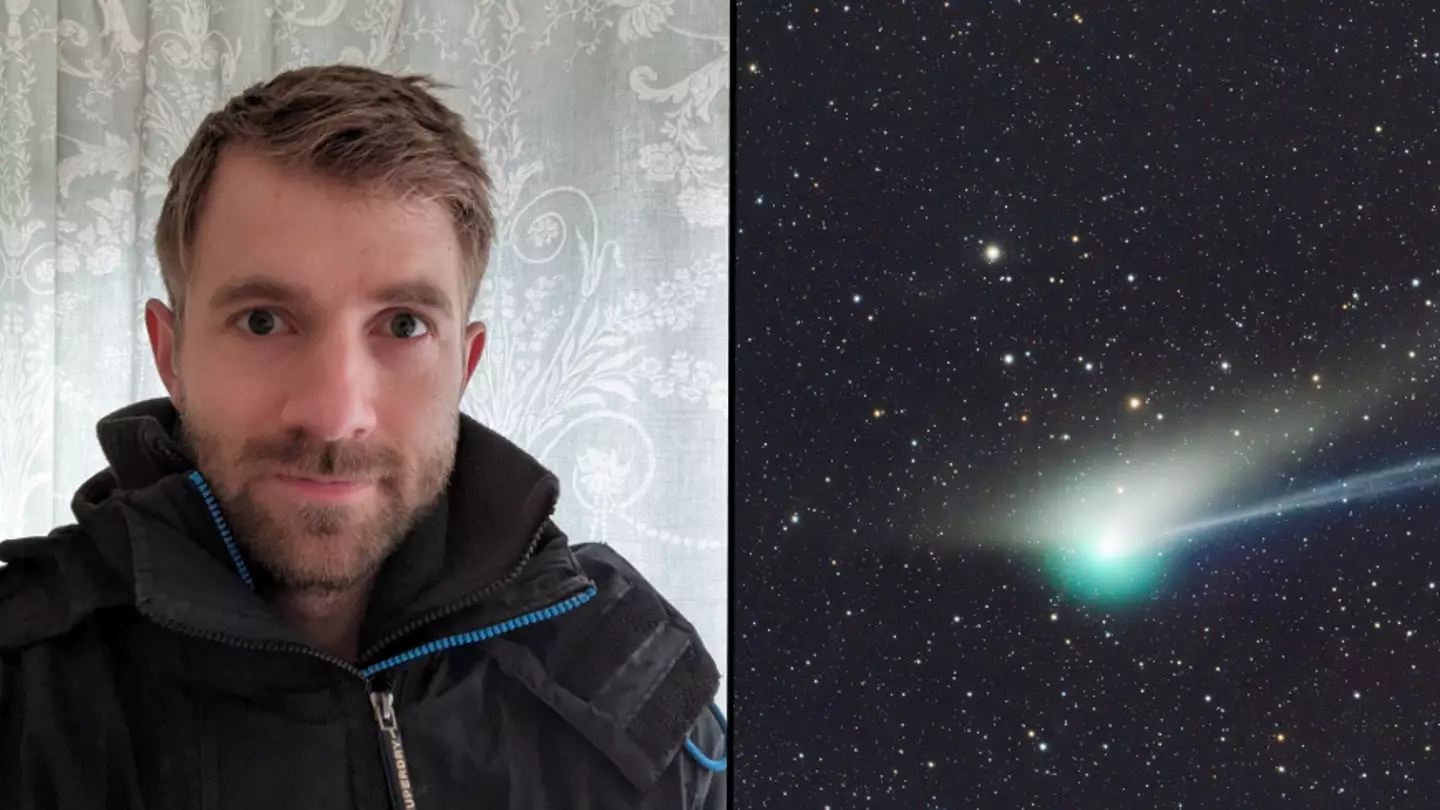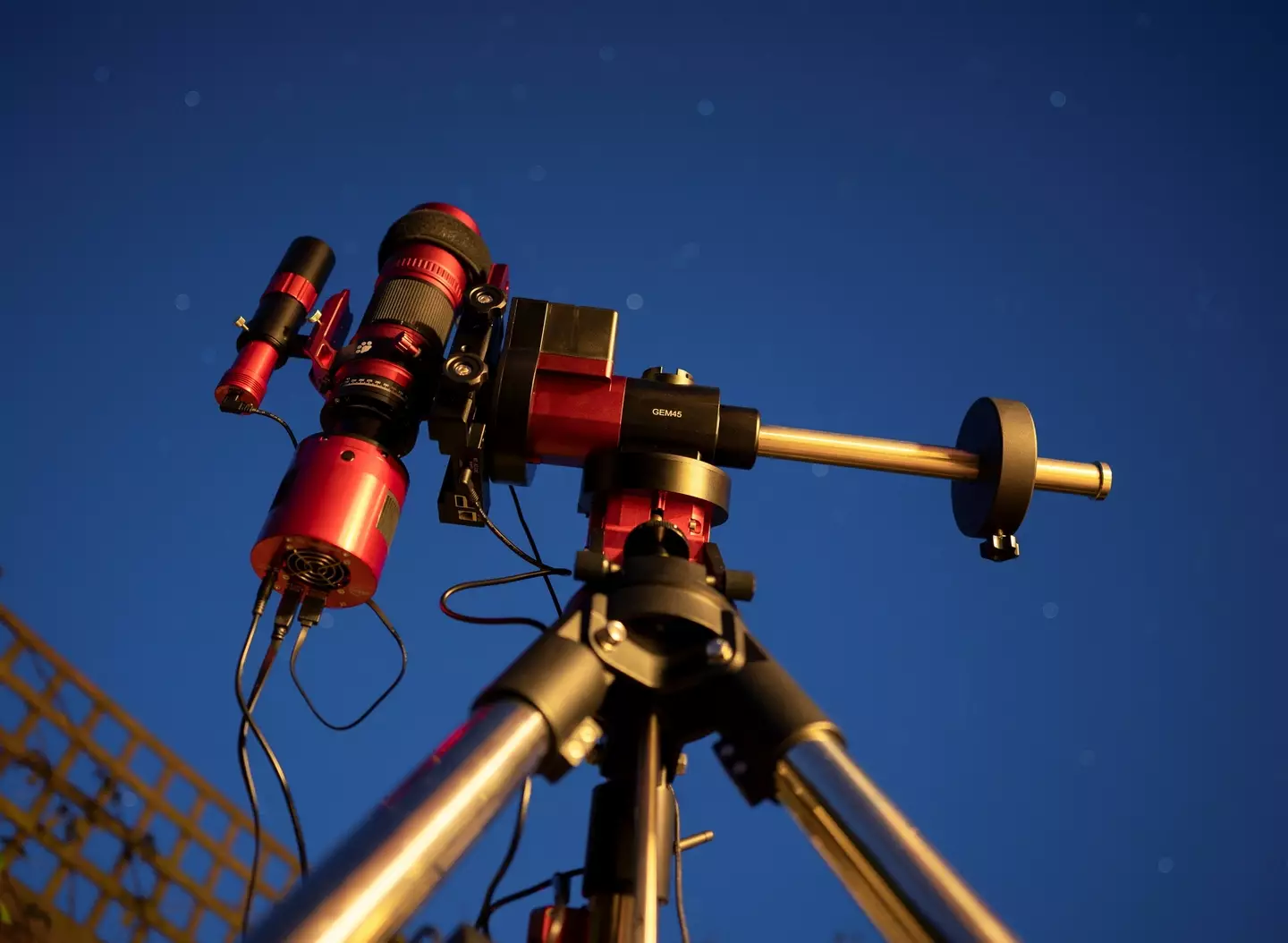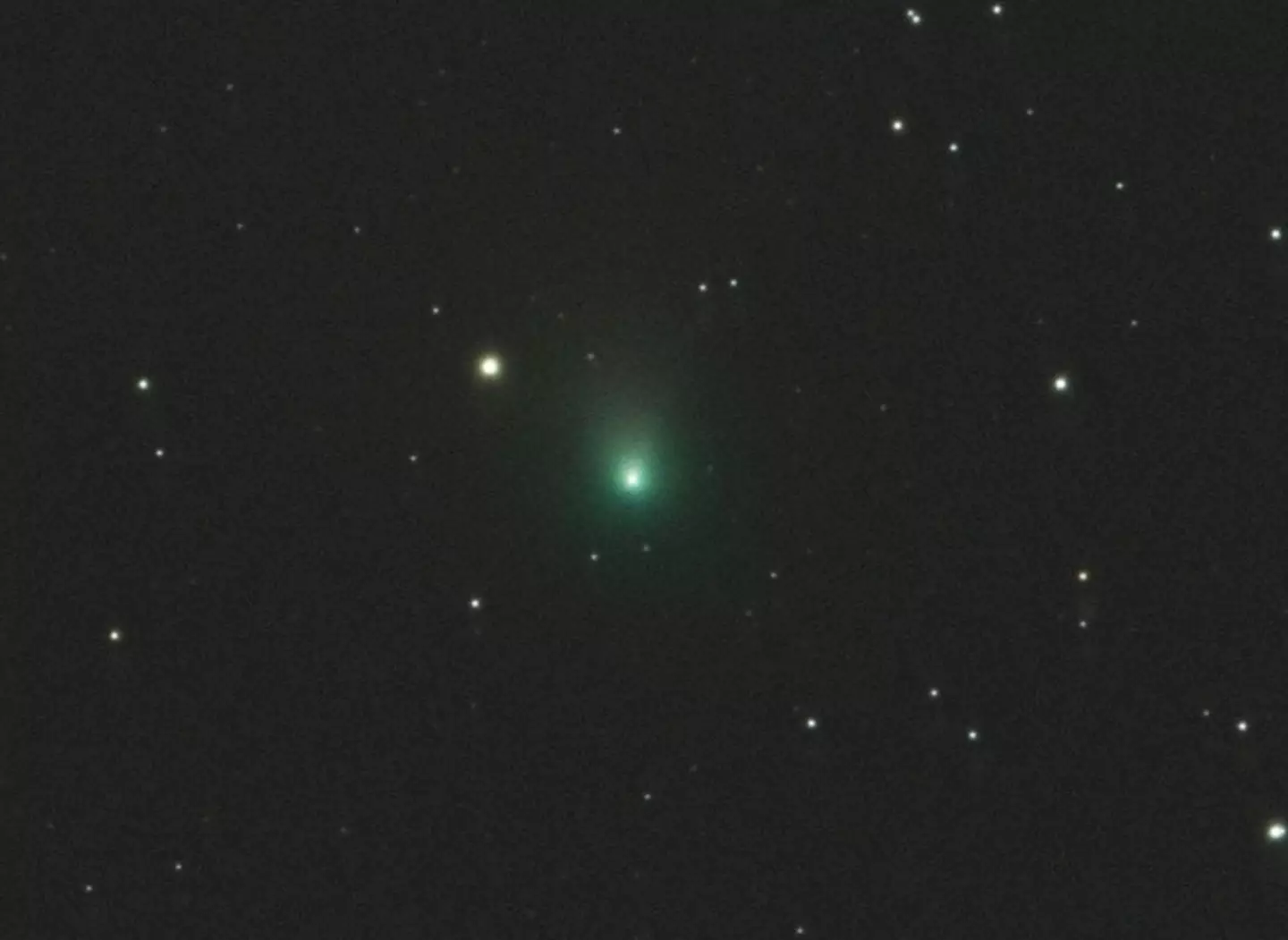
A stargazer managed to snap photos of a scene not visible from Earth for 50,000 years as a 'green comet' zoomed over us this week.
Comet C/2022 E3 ZTF, to call it its technical name, was visible to the naked eye on Wednesday and Thursday (1 and 2 February) as it made its closest approach to our planet following its lengthy, 50,000-year-long journey.
People with telescopes, binoculars and good cameras got the best views from our position approximately around 41 million km (26 million miles) away, but if you happened to miss the comet at its closest, don't worry.

Advert
Many proud amateur astronomers took to social media afterwards to share their impressive snaps, and if you don't have equipment, they're probably the best view you could hope to get.
Tim White, 31, was among those who managed to capture a picture of the comet, and it was certainly worth the 50,000-year wait.
The stargazer set up his equipment as the comet progressed towards earth on the mornings of 20 January and 24 January, and used long exposure on his camera to reveal 'a lot more than our eyes can ever see'.
Tim's incredible pictures show the comet shining brightly, with its green hue created due to a reaction between its gases and the sun.

Advert
Commenting on his achievement, Tim said: "With tracked long exposures [...] and with purpose built astronomy software, the final images made from dozens of subframes can be really impressive. My images involved two hours and four hours data.
"The tracking mount follows the stars to enable long exposures, although the comet actually tracks slightly differently, but software can account for this when processing the data.
"If the moon was in frame alongside the comet, it'd appear really small."
Tim used a telescope and astronomy camera to capture images in the early hours of the mornings in January, but he was far from the only one to secure images of the rare scene.

Advert
George Chan, a member of the UK Astrophotography group on Facebook, shared a photo of the comet glowing brightly to the page, while other photographers shared images after the comet made its closest approach.
After successfully capturing an image of the object, one stargazer wrote: "After 3 hours of fighting with the clouds it cleared up long enough for me to get enough frames to put together a stacked image."
There is still time to see the comet with the right equipment, with astronomers confident it will be visible for a few weeks as it makes its departure away from Earth.